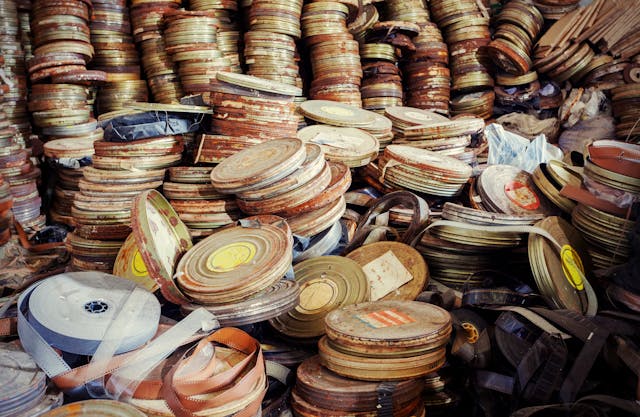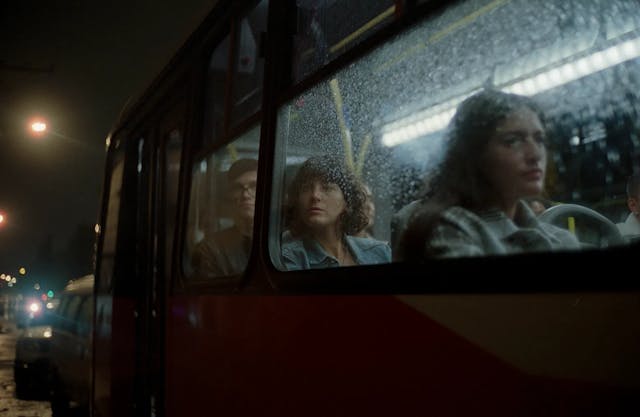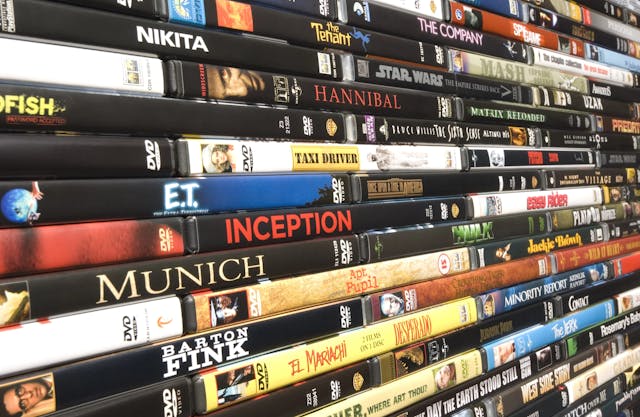The Indie Filmmaker Way: How to Get Your Promo Package Ready

Old-world style: Do you need huge posters to promote your movie? / Photo by Elgaard Holger, courtesy of Creative Commons.
The beauty and the horror of independent movie production is that the more “indie” you are, the more stuff you have to do. If you manage to shepherd your project through the system and secure well-established partners, you will get invaluable help and experience to support you in tasks crucial to reaching an audience, such as sales and marketing. Case in point: promotional materials. Suppose a distributor is already working on your project. In that case, they might shoulder the burden of preparing promotional materials, but for the sake of illustration, let's say you are pushing your movie on the market on your own. It’s up to you to come up with promotional materials.
Every movie that goes out into the wild needs promotional materials to ease its way into the crowded market. Even if your work is unique or geared towards a particular niche or community, you need to present your best face and persuade people to watch it. The press is your best ally in this mission.
What exactly “press” is now is open to interpretation. The evolution of media made the traditional Press Kit obsolete. With printed newspapers and magazines turning off the presses, even the name is Heck, even the Electronic Press Kit (EPK) falls short now - the “electronic” modifier refers to radio and TV -. “Press” may be identified with traditional media outlets - printed press, television - but we have to add those new soldiers summoned by the power of social media: fans. Ideally, you will provide the people who love your movie with assets that will make it easy to share the love.
Press Kit
The traditional press kit can be as elaborate or simple as you like. Its purpose is to give journalists and critics all the information they need to cover your movie efficiently. The basic elements are:
- Poster art for the cover (It can be the official movie one-sheet).
- Synopsis: a short summary of the movie's plot.
- Cast list.
- Credit list of main under-the-line talent.
- Short biographies of key talent.
- Technical information.
- Awards and film festivals.
- Film stills and behind-the-scenes images.
- Contact information of production company and distributor.
These are the basics. You can add more stuff, like an interview with the director or the actors, a director's statement, or information to better understand your movie—for example, whether it takes place in a particular historical context or in a culture different from that of the receiver. Get a graphic designer to make everything look awesome. And you don't need to print it. A PDF will be enough unless you want to hand out physical copies at an event.
Film Stills
Film stills are the cornerstone of film promotion. They illustrate news coverage, interviews with talent, and reviews. They shine on phone screens and in printed assets: posters, postcards, and lobby cards - remember those? -. The advent of digital media may tempt you to export a few frames of your footage, but nothing beats having a living photographer on the set, armed with a true camera - extra points if it shoots in film. What can I tell you? I'm old school.
The issue of film stills brings to mind one of my pet peeves in the movie news racket. There never seem to be enough stills. Have you noticed that when a movie opens at a film festival, almost everybody uses the same photo to illustrate their coverage? Chances are, it’s the only one available. And this is not an issue of lack of resources. Remember how we spent almost a year with a single still from “Killers of The Flower Moon” to go around? Sure, marketing gurus must dose the information to build anticipation, but this was ridiculous. It even turned into a joke on social media. So, when it comes to film stills, please make plenty available. Journalists and reviewers will love you for it.

Cursed image: Lily Gladstone and Leonardo Dicaprio in the "Killers of the Flower Moon" film still seared in our brains. / Photo courtesy of AppleTV+.
Get some behind-the-scenes photos, too: the crew doing their thing, you figuring out stuff with talent and technicians. If you can’t afford a photographer or film production is over, by all means, hit the editing suite and export some screenshots.
Film Posters
I love posters, but things have gotten out of control. I don’t know who started the “character posters” trend, but they owe the world an apology. We live in times where even a minor star with a seconds-long walk-on role gets to mug from a mechanically-designed “big-head” one sheet on the cinema lobby.
If you are working in the indie realm, you probably don’t have much money to spend on it. Assuming the good ol' USA is your primary and first market, follow the standard for size and orientation: 41 x 27 inches, vertically oriented. The US standard One-Sheet works in many markets worldwide, so you can use it if you find interest in Latin America.

Blink, and you'll miss Jason Mantzoukas in "John Wick Chapter 3: Parabellum," but you can stare at his character poster for as long as you want. / Courtesy of Lionsgate.
The good news is that there is a lot of talent around us. Just do a quick search on social media for alternative posters, and you’ll see a lot of stuff that updates classic movies and makes them attractive to new audiences. Reach out to a designer whose work you like and negotiate a fee. Don’t ask for a freebie. You are not going to give your movie away for free, right? You want your poster to distill the essence of your work and make a statement. And print enough, especially if you follow our advice, to reach out to as many local art houses as possible.
Theaters are dotted with promotional material in other formats, such as teaser posters, banners, and annoying character posters. European countries demand exotic formats, like the British quad and the French oversized grande poster. If your project reaches theatrical distribution there, you will probably have a support system to handle that.
A Gangbuster Trailer, or Two
Some editors specialize in cutting movie trailers. One of the beauties of our interconnected world is that you can recruit talent anywhere. Mexican director Lorena Padilla praised the Rumanian editor who made the trailer for her debut feature film “Martinez” (2002). Again, do some web digging and find people you want to work with.
If money is tight and you can’t hire a trailer specialist, you can negotiate a package deal with your movie’s editor. If that is not an option and the wonderful world of non-linear editing does not spook you, you can try your hand at making a killer trailer yourself. Take a peek at our handy guide on how to make a killer trailer. Hey! Maybe you will unleash a new talent.
A teaser and a trailer have become the standard expectation. A teaser can be used for as long as you want, up to the standard 2 minutes of the traditional trailer. The teaser trailer of “Killers of the Flower Moon” was as long as the eventual “official” trailer, and to my eyes, so much better. “Can you find the wolves in this picture?”
The truth is, you can do whatever you want. Just don’t go over two minutes. That might hinder theatrical exhibitors and test YouTube watchers' patience. Remember, they are very nimble when it comes to hitting the “skip” button. One of the best trailers for a 2023 release offers a substantial argument for the one-minute trailer. Check out the promo for Jonathan Glazer’s “The Zone of Interest.”
Oh, and a colorful sideline about trailers. Studio pictures are sometimes cut and recut until their premiere. They arrived at the final edit through a process influenced by executives' input and test screening results. They edit trailers when things are moving around. Reshoots are possible, with new material taking the place of previous scenes. Or they shorten the movie to improve pacing, leaving some trailer images - or entire scenes and characters - on the editing suite floor. Sorry, now it is the digital trash bin. This volatility translates into trailers that might include images that don’t make it to the version people finally see in theaters. In 2023, a judge dismissed a lawsuit a couple of fellas brought against Universal Studios for showing Ana de Armas in the trailer for “Yesterday” (Danny Boyle, 2019) and cutting her character entirely off the movie by the time it hit theaters. Those super fans wanted 5 million bucks to appease their disenchantment.
You can barely see Armas at the 01'58 and 02'00 minutes mark. Lily James mopes as she watches on her computer how boyfriend Himesh Patel meets the star in Hollywood while taping a talk show. If the scene had made it into the finalized cut, it would have been a cameo at best. The point is, you don’t have to be too precious about the trailer. Try to be truthful about the essence of your movie, but don’t sweat any changes that might occur. The legal system is on your side!
Does Anybody Still Watch TV?
Once upon a time, the Electronic Press Kit included short TV trailers lasting 10, 15, and 30 seconds. And they were delivered on videocassettes, kids! If you don’t count the Super Bowl, movie trailers on TV are going the way of the dodo. Still, that length can work online, so it might be useful if you wing them.
Check out how much juice packs this official 30-second TV spot by Warner Bros. for "Goodfellas" (Martin Scorsese, 1990). Never mind the video quality; it shows that promotional materials are rarely seen as worthy of preservation.
https://www.youtube.com/watch?v=iOU1SRMppzE
At least somebody on YouTube is keen on keeping these electronic mementos around. I found that bit of Goodfellas goodness at the TV Spot Movie Fan channel. It has thousands of clips, going back to 1970!
Social Media Assets
If somebody promises you “virality,” know they are spouting a trendy word. True virality happens spontaneously. It’s unpredictable and fleeting. If lightning strikes, it can raise awareness of your movie when you need it the most, right before a theatrical release. It can happen later, once the thing hits streaming or DVDs. Also, the public has some degree of ownership of viral content. If they make a meme or a gif off your images, they choose what to pick or how to present it. You can't stop memes. Remember those funny memes based on Leonardo Dicaprio’s expressions in a scene from “Inception” (2010)? Trust me, Christopher Nolan had nothing to do with them - plus, they came up months, if not years after the movie ran in theaters.

Still, crafting promotional content formatted for sharing through social media platforms like Facebook, Instagram, and Twitter can't hurt. I don’t believe too much in influencers, but if people who enjoy your movie see this content on their platforms, sharing it is a low-effort, no-friction way to deploy word-of-mouth recommendations to their networks of friends and neighbors. Make short videos, title treatment animations, and GIFs. Think of them as the new movie postcards that used to be available for free in theater lobbies, bars, and cafes. Please don’t see it as a chore. Like any other promotional material, it is an opportunity to define the essence of your film and unleash your creativity. Check out the great stuff done for Rodrigo Moreno’s “The Delinquents,” Argentina’s Oscar candidate. It may not have got a nomination, but it is one of the best movies released in 2023.

¡Share this character card of actor Esteban Bigliardi to show your love for "The Delinquents"! / Image courtesy of MUBI.
Imagine a contemplative hang-out movie in the spirit of Eric Rohmer reaching out to online kids. What’s not to like? "The Delinquents" is available to stream on MUBI. See what happened there? Thanks to the creative team's good work, the movie gets a shout-out here, months after its theatrical release.
Swag
Things can go wild and expensive when you enter the world of swag. Once upon a time, access was king. Seeing movies before everyone else was not necessarily a perk, but a must to have reviews ready to publish on opening weekend. Now, it’s not enough to secure coverage. Blame it on two things: first, the abundance of choices. The number of movies demanding attention has risen proportionally to the reduction of their theatrical runs. Once upon a time, movies could spend months in a single-screen theater. Now, a multi-screen cinema churns out stuff like an assembly line.
The second factor is the rise of the internet and the democratization of movie coverage. This is, in principle, a good thing, but civilians and personalities without the ethical guardrails of journalism entered the information ecosystem. The rise of Ain’t It Cool News marked this change in social mores, with Harry Knowles demanding “pwesents” from studios in the middle of his columns. Yeah, he wrote it like that.
This kind of thing happened before but was mostly covert and rare. It wasn’t the normal state of affairs. Now, sending stuff is the lay of the land. Pretty much every big studio, streamer, and distributor comes up with assorted promotional material to butter up critics, journalists, and social media personalities to convince them to give their movies attention. It can be as basic as a T-shirt and expensive as elaborate coffee table books and trinkets. Recipients may share pictures of these things on social media. Some studios even make ancillary merchandise and sell it to any movie buff who wants to manifest his love by spending more money. Check out the A24 Films online store, where cool kids shop for scented movie-themed candles at a premium price.
Do you have to spend money creating this kind of stuff? Well, no. You might be at a disadvantage against well-established institutions—in the hyperconnected world, we are all competing for attention—but no serious person will dismiss your work for lack of swag. And if they demand something in exchange for coverage, you likely don’t want them jumping on your train.
Parting Words
Hopefully, doing your press kit will be creatively gratifying and effective in pushing your movie forward along its road. Don’t get sore if you get a distributor or a film publicist and they want to redo the whole thing. Trust their experience. They know how to get butts into seats. Once the people buy the ticket or push play in the streaming service, they are at the mercy of your vision.
Watch “Lonely”
“Lonely” is a powerful reminder that no one is ever truly alone, and there is always someone out there who cares and wants to help.
Stream NowWant to get an email when we publish new content?
Subscribe today




























